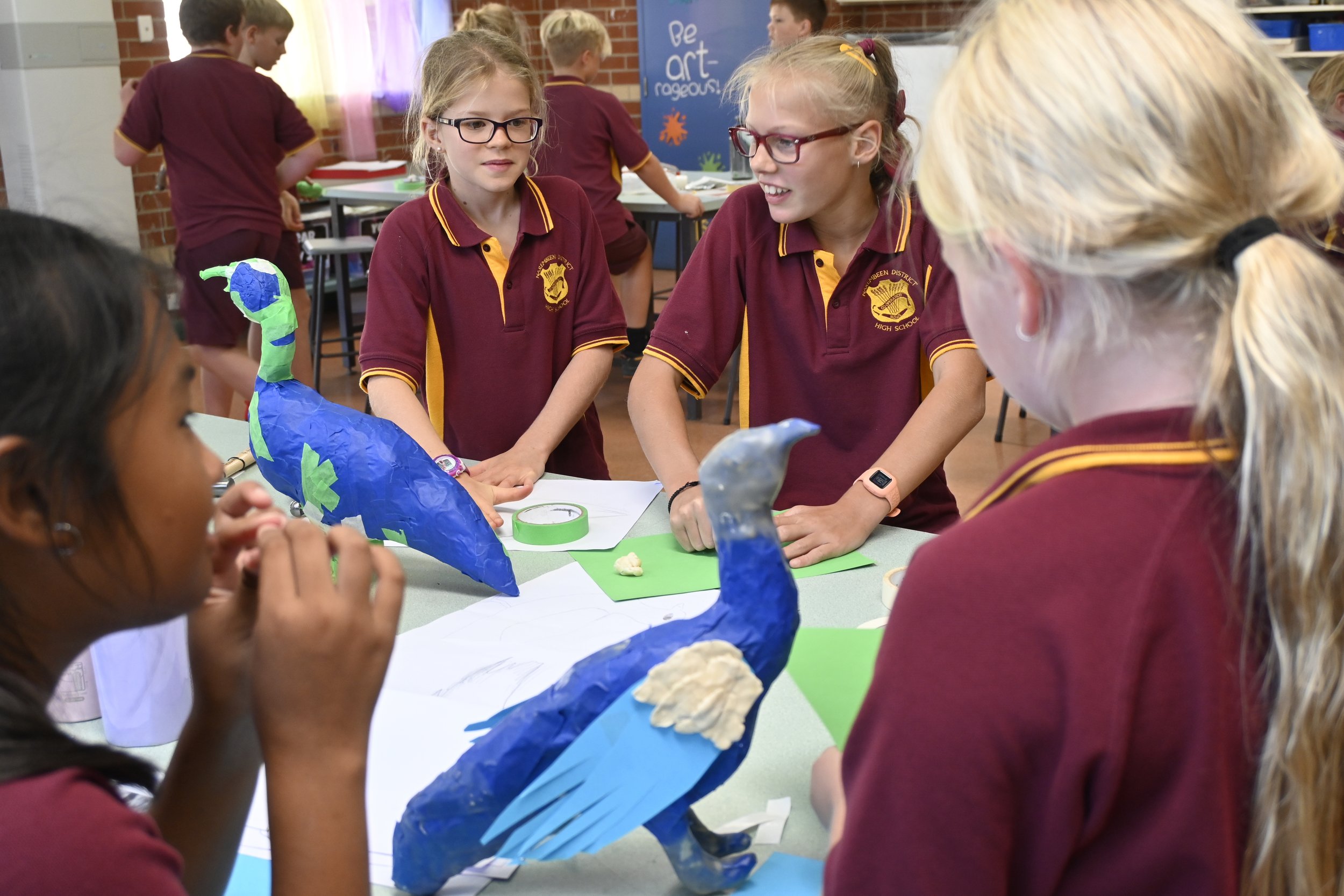
Rewilding our endangered bushland
one biodegradable sculpture at a time
How do you stop invasive grasses from taking over endangered woodlands?
You turn them into biodegradable bioplastic sculptures that break down over 12 months and reseed the soils with native grasses.
Simple, right?
Slow Dusk, the Bio-Sculpture project by Regional WA Artist Chloe Flockart was born out of a deep sadness watching an endangered woodland die off before her eyes. Encroached by farmlands, littered with plastic rubbish, and choked out by weeds and grasses blown in off farms, Chloe decided to take radical action and reintroduce animal species missing from the biosphere back into the landscape as sculptures, with one vital twist. The sculpture needed to do what the missing animal species do naturally— spread seeds. After a year of research, Chloe partnered with a Regional WA School and worked with students to craft 12 sculptures, harvested invasive grass, processed the grass into a biopolymer, and collected seeds of species from the grassy and mid strata of the woodland, and let the sculptures loose in a reserve to rewild and repair the damage caused by large scale intensive agriculture.
It all seemed blatantly obvious once I started surveying the surrounding farms and soils of the woodlands. Plastic from farms is getting into our native spaces. Our native spaces are shrinking on the fringes as farms expand. The rapid decline of native mammals and birds means some sites are struggling to repair themselves. Turning parts of the problem into the solution felt right.—Chloe
After success with the endangered Eucalyptus Woodlands experiment, Chloe is turning her sights to the South West of WA and hopes to repeat the project using invasive species in the Ludlow Tuart Forest.
If you’d like to get involved or know more, please contact Chloe here.
